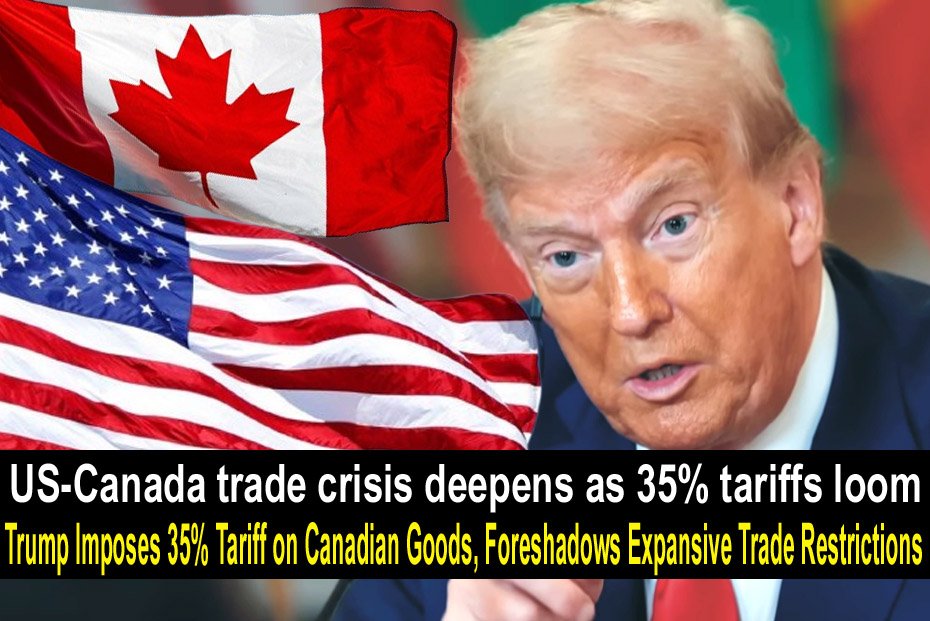US-Canada Trade Crisis: New 35% Tariff to Raise Prices – Key Details
Trump Imposes 35% Tariff on Canadian Goods, Foreshadows Expansive Trade Restrictions
In a striking shift for U.S. trade policy, former President Donald Trump unveiled a sweeping 35% tariff on Canadian imports, a decision that sent shockwaves through global markets and political circles. Scheduled to begin on August 1, 2025, the measure aligns with Trump’s longstanding critique of international trade imbalances. He framed the move as a pivotal step in rebalancing America’s economic partnerships worldwide.
The announcement was made during a charged rally in Michigan, a pivotal industrial state. Trump declared the tariff a necessary defense against what he termed “exploitative trade practices,” vowing further actions to prioritize U.S. industries.

Canada’s Sharp Rebuttal to U.S. Tariff Hike
As the top trading partner of the U.S., Canada reacted swiftly to the tariff imposition, which targets critical exports like auto parts, lumber, steel, aluminum, and agricultural products (including dairy and grains). Prime Minister Justin Trudeau convened an emergency meeting with advisors, where experts warned of severe repercussions for cross-border trade and shared economic stability.
Elise Tremblay of the Canadian Chamber of Commerce highlighted the disproportionate strain on small and mid-sized businesses, noting, “Many lack the profit margins to withstand such abrupt cost hikes.”
Market Turmoil and Investor Jitters
Financial markets recoiled immediately. The Canadian dollar plummeted against the U.S. dollar, while Wall Street saw heightened volatility—the Dow Jones fell 0.6%, and European/Asian indices mirrored the anxiety. Economists projected higher U.S. consumer prices for goods like vehicles, construction materials, and groceries due to supply-chain bottlenecks.
Dr. Linda Chan, an economist at Georgetown University, cautioned, “Tariffs shield domestic producers but often backfire by inflating costs and stifling growth.”
Trump’s Broader Trade Agenda Emerges
The Canada tariffs may herald a wider strategy. At a recent event, Trump hinted at escalating tariffs against China, Mexico, and the EU, stating, “We’ll impose 15%, 20%, or beyond—whatever it takes to defend American jobs.”
This echoes his first-term policies, where he slapped heavy tariffs on Chinese imports and renegotiated NAFTA into the USMCA. Analysts speculate the timing aims to galvanize his base ahead of the 2026 midterms, leveraging themes of economic patriotism.

Divided U.S. Reactions
Support:
-
Mike Reynolds (CEO, IronGuard Manufacturing) praised the move: “Finally, a leader putting American workers ahead of foreign interests.”
Backlash:
-
The National Retail Federation warned, “Trade wars hurt families—they’ll pay more for everyday goods.”
Global Fallout and Legal Perils
Diplomatic Strains:
-
The EU urged “cooperation over confrontation,” while Asian economies like Japan and South Korea monitored developments warily.
WTO Loopholes?
-
Raul Martinez, a trade law scholar, noted potential WTO violations, risking retaliatory tariffs or lawsuits.












Pingback: How Immigration Is Helping America Avoid A Workforce Crisis Amid An Aging Population